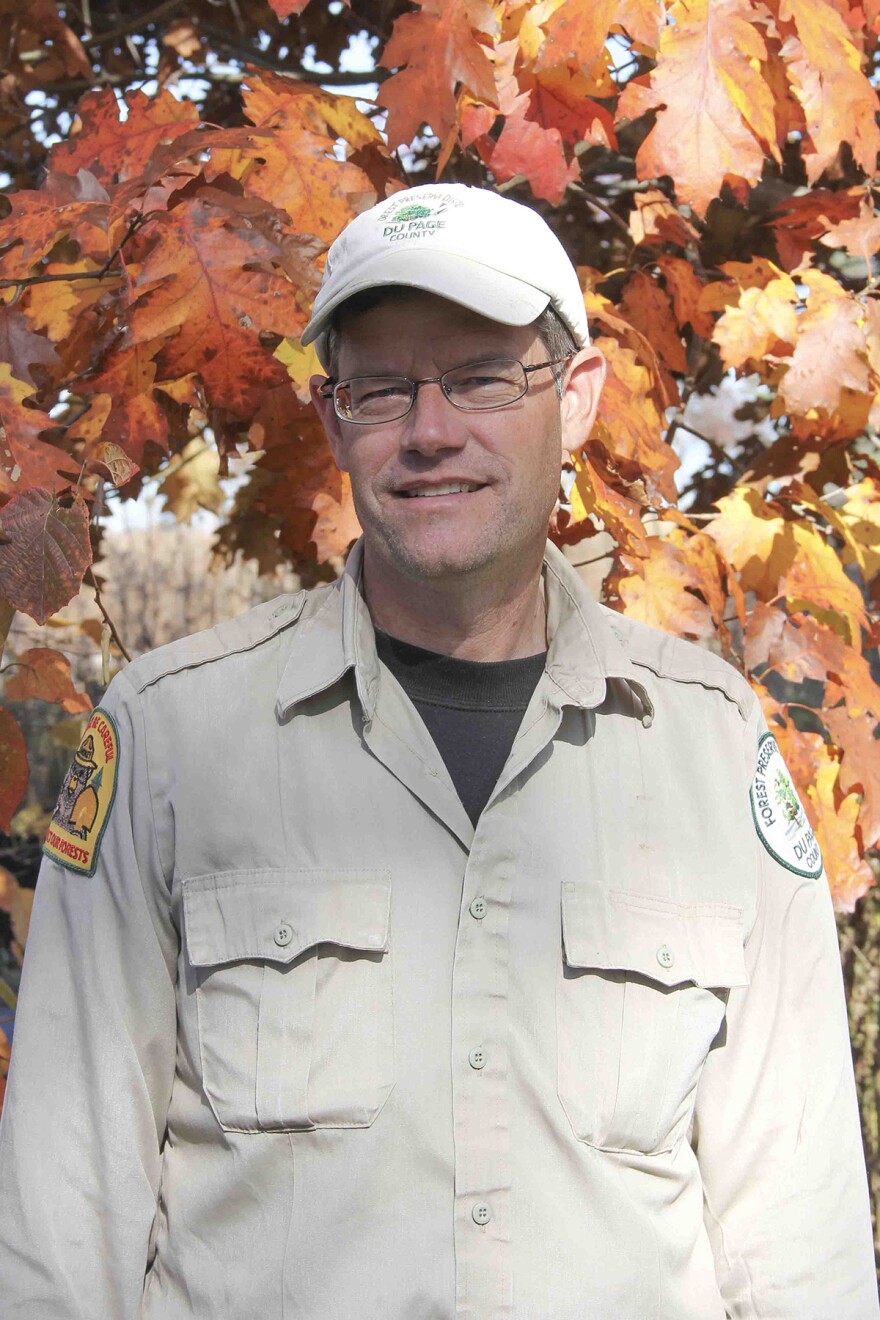Recent encounters between coyotes and humans have put the canines in the public eye. We have details on why these animals seem to be popping up in more populated areas.
Earlier this month, one animal was captured in Chicago and sent to a wildlife rehabilitation center, while another remained on the loose. Despite the extensive news coverage, one question still remains. What brought them downtown?

Peggy Doty is an educator for the University of Illinois Extension. She said coyotes are attracted to cities because they eat quick-breeding prey, like rodents and rabbits.
“They did a study in Chicago. They had, I believe it was hit by a car. In that one coyote’s stomach alone, there were 11 rodents, four of which were full-size city rats, and that was one animal,” she said.
In rural areas, coyotes spread out more because food is less readily available. Sandy Woltman is the director of operations at Oaken Acres Wildlife Center in DeKalb County. She said coyotes adapt easily to new surroundings.
“They’ve been known to prey on small deer, such as a small fawn. It would take several coyotes to take down a little bit bigger deer. They’ll also prey on Canada geese and even on the goslings.”
Doty said a common misconception about coyotes is that they live in packs. She says they’re more like families.
“I always call coyotes like 'The Waltons' because you’ll have a mother and a father, you’ll have the pups, and they’ll often keep a female from a year past as a babysitter because it takes a lot of animals to feed pups if all you’re eating are mostly mice and rabbit," she said.
Mothers will eventually push the males out to live on their own and eventually find a mate.
Coyotes normally steer clear of humans, which is why Doty said it’s important to not let them get comfortable.
“If you see them, don’t be like ‘Oh, look at you.’ You want to yell at them, scream. We need them to know to always keep their distance for our safety, but more importantly, theirs," she said.

Woltman said this goes double when it comes to leaving out food sources such as garbage, compost, and bird feeders.
“You’re not only feeding the birds, but you’re feeding the animals that are coming even at night to feed on the seeds, such as mice and rats and rabbits," she said. "It’s an easy food source now for your coyotes to come and feed on those animals, bringing them closer towards people, which is getting them in a little more trouble.”
If a coyote becomes accustomed to being around humans, or fed by them, that is when communities may need to put one down. The state’s coyote season is essentially year-round and trapping runs from mid-November through mid-February. But Doty said if a coyote isn’t causing any trouble, a preemptive kill may create a “predator sink.”
"…where nobody owns the property, but everybody that comes in, maybe you could get a baby goat snagger. You could get a duck taker or a chicken taker. The other one protected your space and only wanted your rodents.”
Pets could also be at risk. Cats and other small animals could be seen as prey of opportunity. As for dogs, barking can cause problems, especially if the pets aren’t on a leash. DuPage County Forest Preserve Ecologist Dan Thompson explained.

“The smaller breed dogs, particularly the ones that have that Napoleon Complex and are always challenging other larger dogs, essentially if you could interpret what that other dog’s saying, they are really challenging and being very vocal, trying to pick a fight.”
Larger dogs are at much less risk due to their size. Doty said her Alaska Malamute mix provoked an entirely different coyote reaction.
“They’re out there yipping and howling and he lets out that deep guttural howl... and they go silent. So we usually run out in the backyard and shine the flashlight in the black field. There’s little green eyes blinking like, 'What was that?’”
In the end, coyotes can be dangerous if they get too accustomed to humans, and can act strangely if they’re sick or injured (like the one caught in Chicago). That is usually what prompts lethal action. But outside of those circumstances, Doty says coyotes are ultimately just another part of nature.
“They aren’t sitting out there thinking about us. They honestly don’t know we care. They’re just trying to keep their species alive."



